T. Belman. The fact that Hamas was able to arm themselves to such an extent is another of Israel’s big failures. And the IDF is paying for it in blood.
Militant group returned in force with drones, homegrown missiles and fortified tunnels; ‘armed to the teeth’
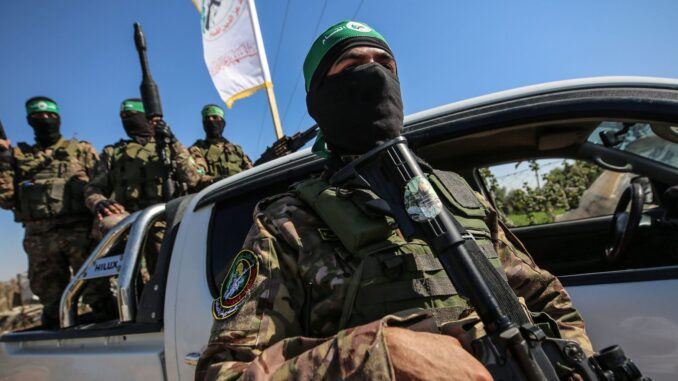 Palestinian fighters from the armed wing of Hamas take part in a parade this July to mark the anniversary of the 2014 war with Israel. MAJDI FATHI/NURPHOTO/ZUMA PRESS
Palestinian fighters from the armed wing of Hamas take part in a parade this July to mark the anniversary of the 2014 war with Israel. MAJDI FATHI/NURPHOTO/ZUMA PRESS
With 26 fatalities in a week of operation, Israelis are dying at more than twice the rate as in 2014, when 67 lost their lives during a seven-week campaign.
At the heart of Hamas’ ability to respond to the invasion is the group’s longstanding relationship with Iran, which has continued to support the Palestinian militants with money and technical expertise. In the months leading up to the Oct. 7 attack, hundreds of Hamas fighters went to Iran for military training, The Wall Street Journal has reported.
Avi Melamed, a former Israeli intelligence official, said that while he expects Israel to ultimately triumph, the sophisticated arsenal meant Israel would have to brace for a long-haul struggle. “Hamas is a military power that is significant thanks to Iran,” said Melamed. “They are armed to the teeth.”The Islamist group has used the expertise to develop local skills in arms manufacturing, cobbling together weapons from materials available in the Gaza Strip, despite an Israeli and Egyptian blockade of the territory, weapons it is now using to fight the Israeli army.
Some analysts say that even if Israel manages to deplete Hamas’ military capabilities, the destruction wrought to achieve that goal may prompt a lengthy insurgency once the campaign is over.
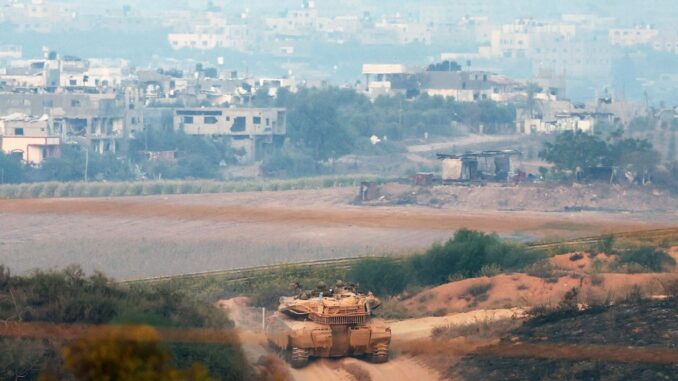
An Israeli tank maneuvers next to the Gaza Strip on Nov. 1. PHOTO: ATEF SAFADI/EPA-EFE/SHUTTERSTOCK
The U.S. fought several wars against militant groups, including al-Qaeda and the Taliban, only to face lengthy and stubborn insurgencies. Eradicating Hamas will perhaps be even harder, analysts say.
“Hamas has very, very deep roots, and that’s different from al Qaeda, which was smaller,” said Dan Byman, senior fellow and expert in counterterrorism with the Center for Strategic and International Studies think tank.
Even if a defeat for Hamas deters Palestinians from joining the group, the Israeli offensive will fuel anger among Palestinians, who might join other armed groups. Israel hasn’t offered any indication of what comes after the military operation. It likely won’t maintain a permanent ground troop presence in the strip, and there are no settler communities that appear willing to live there. Crucially, Byman said, even the U.S. had tangible support in the populations where it fought insurgencies.
“The U.S. had advantages, a lot of Iraqis and Afghans who wanted to work with them,” he said. “There are no Palestinians eager to work with Israelis in Gaza.”
Marwan Abdel-Al, a senior official in the Popular Front for the Liberation of Palestine, a Syria-based secular armed group with operations in Lebanon, Gaza and the West Bank, said in an interview in Lebanon that Hamas and its allies are better equipped to respond to an Israeli ground invasion than in the past.
“Today, it’s totally different from 2014,” he said, pointing to drones, as well as the type of advanced guerrilla methods developed by Iran’s Islamic Revolutionary Guard Corps and the Russian Wagner mercenary group.
The Front said it participated in the Oct. 7 attacks and that it continues to lob missiles into Israel from Gaza.
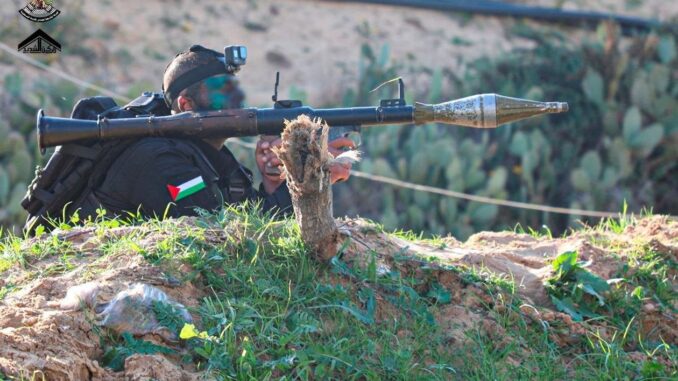
A Palestinian group representing several militant factions released photographs in December showing what it says was training for a “raid behind enemy lines” at an unknown location. PHOTO: REUTERS
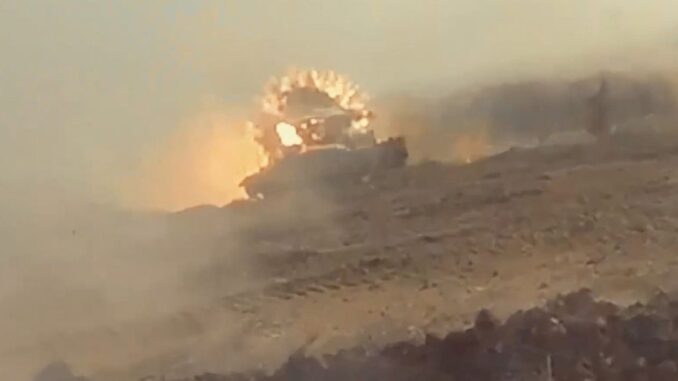
View of what Hamas described as a anti-armor shells fired toward Israeli tanks and vehicles in Gaza this month. PHOTO: HAMAS MILITARY WING/REUTERS
Abdel-Al warned Israel will get bogged down, like Germany did in Russia during World War II or the U.S. in Vietnam. “The guys there, on the ground,” he said, “they are ready.”
Hamas has been manufacturing rockets for more than two decades. The first generation of Qassam rockets, cheap sugar-fueled rockets that Hamas began producing during the Palestinian uprising known as the Second Intifada, around 2001, had a range of 2 to 3 miles. The third generation, Qassam 3, had a range of about 10. Now, Hamas has shown missiles with a range of up to 150 miles, covering basically all of Israel.
In the past, Iran produced rockets in Sudan and smuggled them into Gaza via tunnels from Sinai with the help of Egyptian Bedouins. That has largely been stopped now, since Egypt flooded the tunnels and Sudan initiated a rapprochement with Israel and distanced itself from Iran. Instead, Hamas and Islamic Jihad have moved to indigenous production and are manufacturing both explosives and the weapon from raw materials, according to analysts.
To manufacture rockets, Hamas has used steel piping for metal in motors and warhead casings. It has used unexploded Israeli artillery heads for explosives. Other elements, like the fusion system and fins are easy to build and weld together, and fuel for the rocket’s propellant can be smuggled in.
Hamas’ most-potent defense may be its extensive tunnel network that runs beneath Gaza like an underground city, storing fighters, fuel, weapons and, since Oct. 7., hostages.
“The tunnels really change everything,” said Daphné Richemond-Barak, professor at Reichman University in Herzliya, Israel, and author of a book on underground warfare. “The tunnels neutralize any military advantage.”
Hamas’ tunnels have been extended and reinforced since the 2014 war, likely with counsel from Iran, which keeps some of its own military facilities underground, Richemond-Barak said, adding that Hamas has also been inspired by Islamic State’s use of similar tunnels.
“This is probably the most sophisticated network of tunnels seen in any type of war,” she said.
The tunnels also run to the sea, which can be used for smuggling, to launch unmanned underwater vehicles and as conduits for Hamas frogmen, according to Lenny Ben-David, an expert in Hamas weaponry with the Jerusalem Center for Public Affairs, a think tank.
The central role of the tunnels partly explains the scale of the Israeli bombardments. Israel says Hamas stores weapons and command centers under civilian buildings, including hospitals. Israel has also deployed a special-forces unit specialized in searching and destroying tunnels, called Yahalom.
To get to Hamas’ weapons, the Israeli military must “peel off the top layer of Gaza,” Ben-David said.
Israel says it has hit more than 11,000 targets in Gaza, population two million, using missiles, bombs and artillery.
The campaign has taken a tremendous toll on Palestinians in the Strip, killing more than 9,200, the majority women and children, according to health authorities in Hamas-controlled Gaza. The toll doesn’t distinguish between militants and civilians. An estimated 1.5 million people have been displaced, many of them fleeing south or taking shelter in schools, hospitals and international aid facilities.
Earlier this week, repeated Israeli airstrikes targeted Jabalia, a refugee camp that has become a warren of permanent homes. Gaza hospital officials said hundreds of people were killed and injured in the strike. The Israeli military said it had struck an underground bunker killing dozens of militants, including a senior Hamas commander who played a key role in the Oct. 7 massacre.
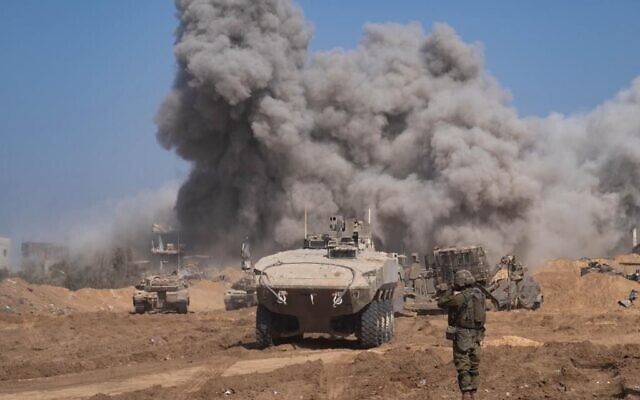
Smoke rises following Israeli strikes on the Tal Al Hawa neighborhood in Gaza City. PHOTO: MOHAMMED SABER/EPA-EFE/SHUTTERSTOCK
Privately, Hamas has expressed confidence it can sustain a long-term campaign before it runs out of arms, according to officials in the region. A few days after the Oct. 7 attack, Hamas told Iranian Foreign Minister Hossein Amir-Abdollahian the militants “can continue for months on their own,” Lebanese Foreign Minister Abdallah Bou Habib said in an interview.
Back in 2014, Hamas mostly relied on Soviet-era projectiles with no guidance system that dated as far back as 1969, according to a United Nations report published the following year. Drones were a rarity in Hamas’ hands and were generally crude models with limited strike capabilities.
In this war, Hamas has published videos of targeting Israeli troops with munitions dropped from drones, a Ukraine-style battlefield innovation, and damaged two tanks and several military vehicles.
Israeli forces have also faced attackers equipped with North Korea-made F-7 High-Explosive Fragmentation rockets; Kornet man-portable anti-tank guided missile, a model developed in Russia but often copied by Iran; and locally-produced “Al-Yassin” Tandem anti-tank rockets.
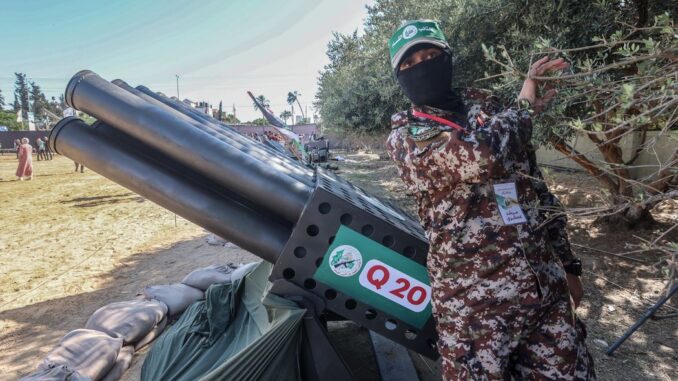
A Palestinian fighter from the armed wing of Hamas takes part in a military exhibition in July marking the anniversary of the 2014 war with Israel. PHOTO: AHMED ZAKOT/SOPA IMAGES/ZUMA PRESS
A new addition to the battlefield has been paragliders, which Hamas used to penetrate Israel on Oct. 7 as a form of airborne infantry. To avoid detection in Gaza, Hamas fighters received training in paragliding in Iran, according to people familiar with the matter.
This week, Hamas published a video displaying a guided underwater vehicle called Al-Asef described by Hamas as a “torpedo,” which appears similar to an underwater drone that Israel in 2021 said the militant group had tried to fire at one of its vessels.
Hamas has acquired these weapons despite attempts by Israel and Egypt in the aftermath of the 2014 war to reduce the flow of weapons going through tunnels connected to Gaza with the Sinai. Over time, some of those routes were rebuilt and smuggling resumed, according to Middle-East security officials.
More importantly, Israel failed to seal off access by sea to Gaza’s 25 miles of coastline. Smuggling by sea, especially via fishing boats used by local Gazans, has been much more difficult to monitor for the Israeli military.
The sea route may explain the presence of specialty assault rifles that turned up on the bodies of dead militants on Oct. 7. The AK-103-2 were initially manufactured by a Russian government factory and exclusively bought by Libyan strongman Moammar Gadhafi following the lifting of an arms embargo in 2003, said Adam Rousselle, a researcher at the Militant Wire, a network of experts that examines weapons used by non-state actors.
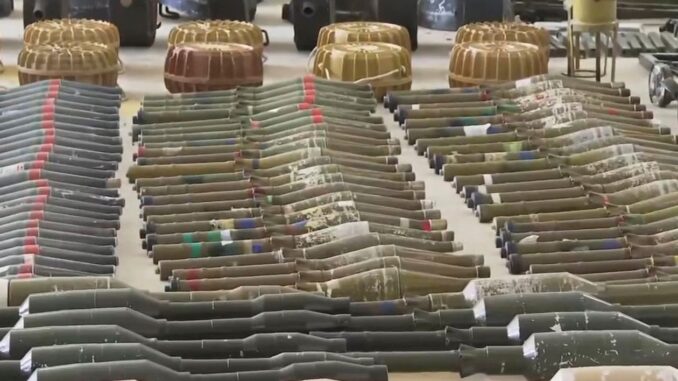
Suspected North Korean-made F-7 rocket-propelled grenades, many with a distinctive red stripe on their warhead, were captured by the Israeli military. PHOTO: ALON BERNSTEIN/ASSOCIATED PRESS
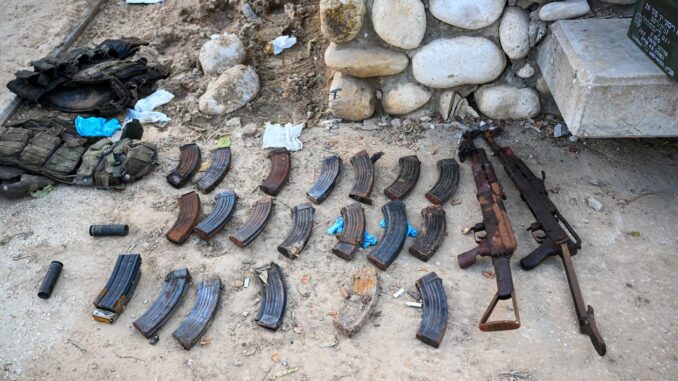
Automatic weapons, magazines, and flak jackets are displayed after Hamas militants attacked a kibbutz days earlier near the border of Gaza. PHOTO: ALEXI J. ROSENFELD/GETTY IMAGES
A team of Hamas operatives exported large amounts of weapons sent from Libya to Gaza possibly as recently as 2017, according to a Libyan prosecutor’s file reviewed by the Journal. The group received the assistance of the two former leaders of the Libyan Islamic Fighting Group, an al-Qaeda affiliate, said a Libyan security official.
During its rampage at Kibbutz Holit, a rural settlement 1.2 miles from the Gaza Strip, Hamas used Iranian made man-portable surface-to-air missiles, according to Calibre Obscura, an open source analyst that specializes in identifying weapons used by non-state actors. The armed branch of the Palestinian Islamic Jihad posted a video of an attack on the settlement with anti-tank guided missiles. Both weapons were produced by subsidiaries of the Iranian ministry of defense in the 1990s.
Hamas has also developed a robust domestic weapons-manufacturing capability that partly relies on Iranian technology transfers.
It has built a drone called Ababil, developed after Iranian design. Hamas also has a domestically produced drone called the Zouari, named after a Tunisian engineer, Mohammed al-Zawari, who helped develop the weapons and was assassinated in Tunisia in 2016, a killing Hamas blamed on Israeli intelligence.
“We have to destroy these places and not allow them to be built again,” said Yaakov Amidror, a former Israeli national security adviser and now senior fellow at the conservative Jerusalem Institute for Strategic Studies think tank, referring to Hamas’ military infrastructure. “That’s why the IDF after the war will maintain freedom of action in Gaza, whether with airstrikes or troops on the ground.”
Write to Benoit Faucon at benoit.faucon@wsj.com and Sune Engel Rasmussen at sune.rasmussen@wsj.com



Leave a Reply
You must be logged in to post a comment.